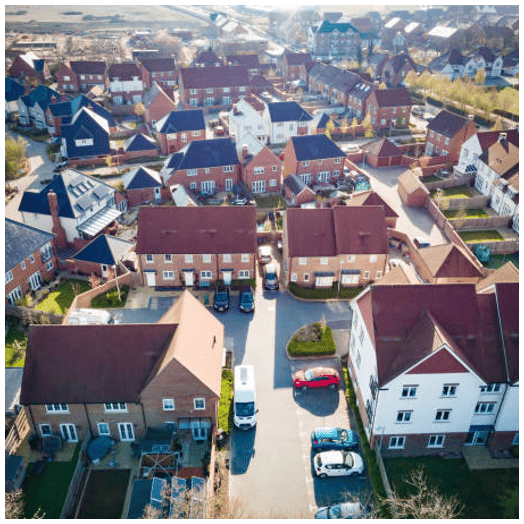Blending data-driven investment management with forward-thinking analytics, Twin Summits Capital (TSC) sits at the intersection of innovation and finance. Our two distinct yet collaborative arms, TSC AIM (Alternative Investment Management) and TSC iLAB (Innovation Lab), engineer personalized solutions for partners eager to dive into novel asset classes and large-scale investment strategies. Our diverse team, spanning both investment and technology sectors, is united by a common mission: to leverage the power of data and technology for superior investment outcomes. Our current focus is on the residential real estate market across the UK, Europe, and North America. With the aid of proprietary technology, our team can strategically identify alpha opportunities, all while effectively managing expansive portfolios of single-unit residential assets, such as single-family homes, on behalf of our investors. At TSC, we champion the integration of technology across all our investment and asset management processes. This approach streamlines our operations, reduces costs for our investors, fosters alpha generation, and paves the way for new investment strategies, redefining the landscape of alternative investment management.
As the US-SFR sector evolves, the technology used to acquire, stabilize, and manage extensive portfolios of SFR assets has also matured. Investment platforms that have advanced their tech capabilities can now utilize algorithms to scan an entire nation’s property market in real time. This enables them to optimally match properties currently available for sale with their investors’ acquisition criteria. At Twin Summits Capital, we excel at the above, while also strategically targeting our investors’ alpha. We leverage a mix of feature analysis, relative value analysis, and machine learning to pinpoint properties that are likely to outperform the market. Our investment management team then employs clustering and optimization algorithms to custom tailor each investor’s portfolio. This ensures the acquired assets best align with any bespoke preferences or requirements, such as income/capital tilts, risk/reward tolerance, ESG mandates, refurb alpha, and more. By integrating advanced technology into our investment process, we strive to provide our investors with tailored, scalable, and strategic real estate investment solutions.
Residential real estate holds the title as the largest asset class globally, with US Single Family Homes being the most significant contributor, currently accounting for an estimated 3 trillion dollars. The US-SFR market became institutionally accessible in 2010, largely due to technological advances reducing operating costs. Consequently, institutional investment in the US soared from minimal involvement pre-GFC to an estimated ownership of over 250k+ homes. The senior management team at Twin Summits Capital was amongst the pioneering investors who helped to institutionalize single-family homes as an asset class and continue to spearhead innovation in this sector today.
So why invest in SFR?
In a climate of escalating concerns over inflation, stabilized portfolios of SFR assets offer a compelling investment case. They provide stable cash flows and serve as a valuable hedge against inflation. The investment thesis for this asset class is further bolstered by its solid underlying fundamentals, higher rent, and occupancy growth rates compared to other sectors (e.g., commercial and retail). There’s also a discernible structural shift towards renting versus owning, driven by affordability constraints among the younger generation in numerous markets. This dynamic paints a promising picture for the future of the SFR investment landscape.
In both the US and UK, the build-to-rent (BTR) sector is demonstrating rapid growth and attracting considerable institutional attention. In the UK, especially, numerous BTR platforms are continuously being unveiled by large institutions aiming to tap into the UK Private Rented Sector (PRS). However, a drawback for investors focusing solely on BTR as a mode of origination is that they limit themselves to a relatively small segment of a country’s residential market and tenant population. Moreover, BTR is significantly less scalable than institutional buy-to-let (i-BTL), which implies a restriction on the amount of capital investors can utilize annually.
On the flip side, i-BTL platforms hold the potential to unlock the institutional capacity of a country’s existing housing supply for investors. They do so by procuring from a substantially larger market, overshadowing the proportion of sites available to BTR developers for construction. However, it’s crucial that the development and establishment of an i-buyer platform in a country is performed correctly, with the requisite technology, data feeds, and management expertise essential to execute an i-buyer strategy. This is because i-BTL vs BTR necessitates a distinctly different approach to asset and property management, considering the assets under management are distributed rather than concentrated in a few locations. Without the support of technology, running an i-buyer strategy in a traditional manner would be nearly impossible.
Investors choosing to build exposure to a country’s residential sector through the i-BTL route as opposed to BTR (or to supplement their new build exposure), stand to benefit in several ways. These include: i) acquisition of income-producing portfolios in a much shorter time span (Months vs Years), ii) custom-made portfolios tailored to different risk-reward preferences, iii) a more diversified portfolio (in terms of both housing and tenant type), iv) a portfolio with reduced concentration risk, and v) a portfolio specifically built to target alpha, containing only properties expected to outperform the market. The aforementioned benefits are unattainable with BTR due to the limited number of potential development sites in a country compared to the number of homes (resulting in liquidity constraints) and the lengthy timeframes associated with property construction as opposed to simply buying and refurbishing (Years vs Months).
By purchasing and refurbishing properties from a country’s existing housing supply, investors have the opportunity to enhance the environmental sustainability and energy efficiency of older homes. This approach helps avoid the significant carbon footprint associated with build-to-rent (BTR) developments, which often involve construction and demolition activities, including the destruction of perfectly habitable houses to make way for new building projects. Furthermore, investors can introduce co-ownership or right-to-own schemes for some properties in their portfolios. In these arrangements, tenants co-own the property with the investor, or they may have the option to purchase their rental property outright at a pre-determined price after a specified period. This strategy not only helps to mitigates risk for investors, but it also continually reintroduces modernized, refurbished, and environmentally friendly homes back into the country’s housing market. This arrangement also assists aspiring homeowners, making them feel more at home in their rental properties, knowing they may have the opportunity to own them in the future.
Although right-to-own schemes can be applied to BTR properties, these properties are often homogeneous by design to minimize costs, and therefore tend to be viewed as more temporary living arrangements. However, studies have shown that when tenants have the possibility of purchasing their rental home, they usually take better care of the property. This outcome, in turn, reduces operational expenses, tenant turnover, and vacancy periods.












































